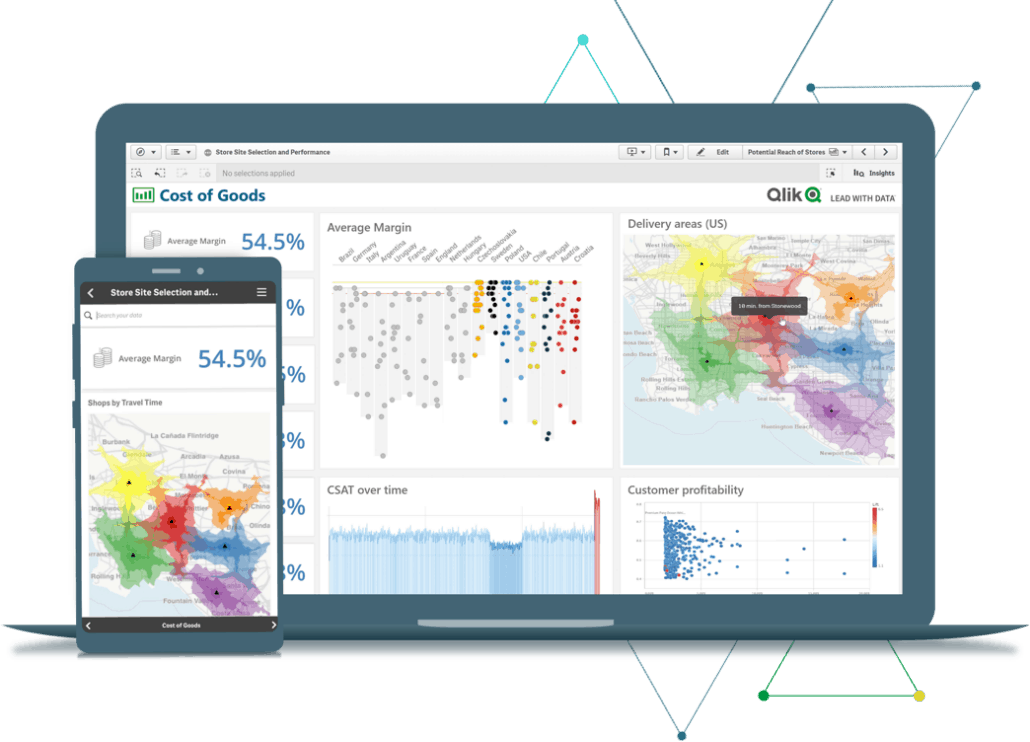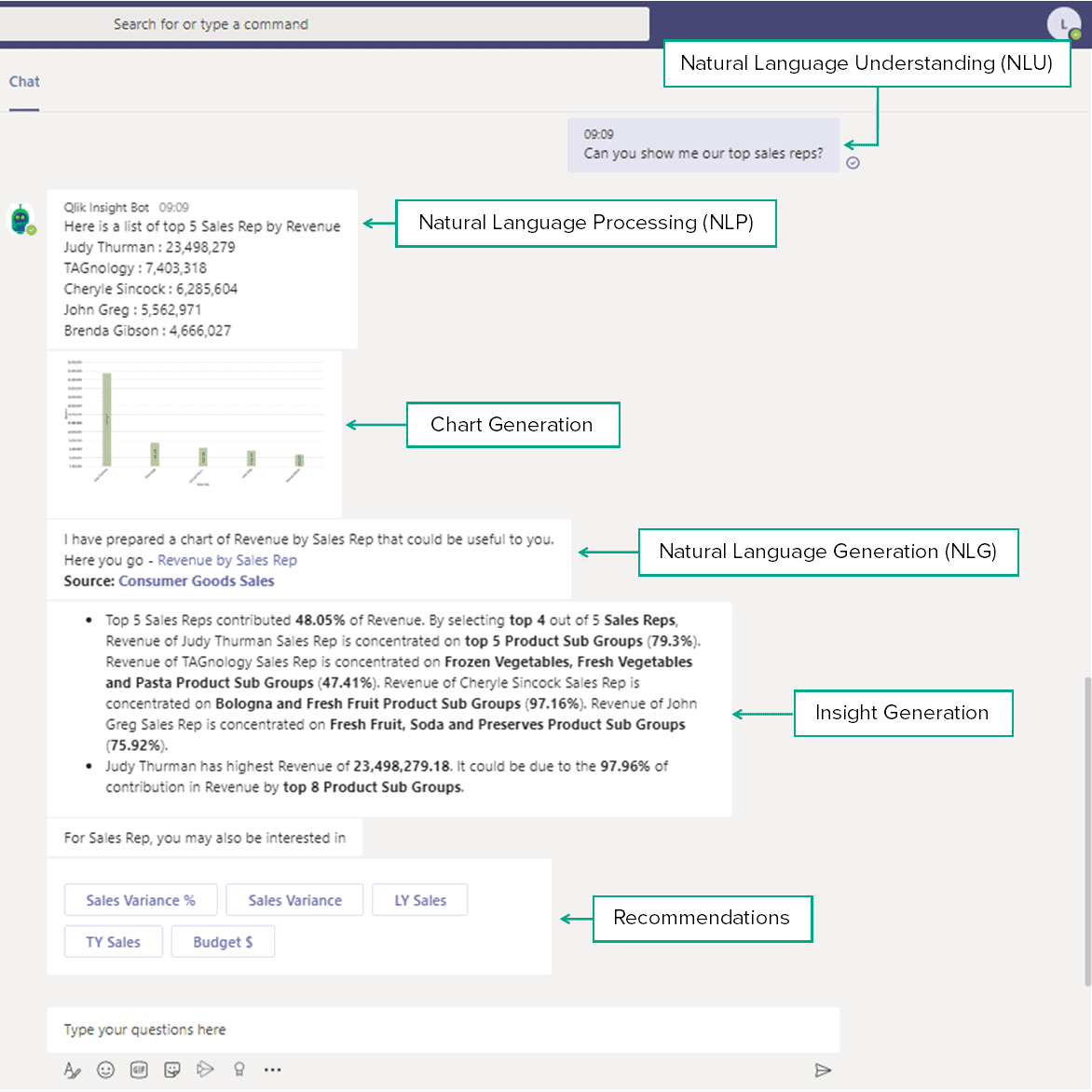Transforming the Future of Work with Microsoft Azure Virtual Desktop
Maximising Efficiency, Security, and User Experience of Microsoft Azure Virtual Desktop Looking to elevate your workplace efficiency and security? Join
Read articleEven with a powerful data visualisation tool like QlikView it can be a challenge to keep up with everchanging business demands for the insights they need to thrive. For example, today during this difficult time of COVID-19 your focus may have shifted to different business and performance insights. You may need to find new efficiencies, ways of saving money, and to better understand your financials to keep your business afloat.
As a Qlik user, you have the ability to take advantage of the offer to combine the guided data visual discovery platform, QlikView, with the next generation analytics platform, Qlik Sense. You gain a whole new range of analytics use cases, at enterprise scale, for a very cost-effective uplift in the investment you’ve already made.
We’ve helped many of our customers to combine QlikView and Qlik Sense, such as Formica. We’ve helped many customers to take a phased approach to moving from QlikView to Qlik Sense, such as Calderdale Council.
So why do organisations choose to take the leap to next gen analytics platform, Qlik Sense? Let’s take a look at the 5 most exciting features of Qlik Sense that our customers have found most valuable.
1. Augmented Intelligence
This is my personal favourite. I think we’re now past the phase of people worrying that robots are going to take their jobs. Most people now realise that by combining human experience and intuition with machine intelligence and automation, you can do your job better and faster.
Without data literacy, organisations are losing the competitive advantage. Only 24% of business decision makers surveyed are fully confident in their ability to read, work with, analyse, and argue with data. This is worrying when IDC forecasts a ten-fold increase in worldwide data by 2025. However, your workforce can vastly improve their performance if given the tools they need to be data literate, such as augmented intelligence.
Let’s look at the stats. 85% data literate people say they are performing very well at work, compared to 54% of the wider workforce. 94% of respondents using data in their current role said that data helps them do their jobs better.
Within Qlik Sense, AI takes the form of automated, context-aware suggestions and insights based on factors such as user behaviour and feedback, community trends, industry knowledge, and more brings the power of the platform to the next level. This assists users to spot hidden insights they might miss using other analytics platforms. It is also conversational analytics, which we’ll go into in depth later in this article.

2. Analytics mobility
We’ve all come to heavily rely on mobiles within our daily working lives for things like communication and collaboration, so it makes sense that analytics has followed suit. I’ve seen from experience how it transforms the way end users interact with data, because they do it from anywhere, at any time.
Analytics mobility gives companies the competitive edge – if you aren’t confined to restrictive static, predefined reports. Your data is available anywhere via a responsive mobile browser and through the Qlik Sense Mobile app. The point of analytics mobility is to give you the answers you need, when you need them. Being able to delve into all of your business data to find the answer to unanticipated questions, or to make the next data-driven decision for unprecedented events is vital.
You don’t have to worry about governance and security either. Qlik Sense has rules-based security to customise access and downloading to protect your data, applications and users. It also provides reliable Enterprise Mobility Management (EMM) support. That way, even if your employees are using their own devices, you get peace of mind that your business data accessed through Qlik Sense is safe.

3. Embedded Analytics
Much like analytics mobility, embedded analytics is the process of ensuring your analytics can be accessed wherever your users need them. This time, we’re talking about embedding your analytics into the business applications, products, websites or portals that will be most valuable. It provides quick and easy access to the relevant data and insights needed – right then and there. That isn’t just helpful for your employees either, it’s a game changer for your customers, suppliers and partners.
In fact my colleague Simon in his eBook, “How to Escape Excel Hell and Achieving Incredible Analytics,” discusses the ways companies can use embedded analytics to find new streams of revenue.
4. Conversational Analytics
Conversational analytics are changing the face of analytics. It makes finding insights so easy that even non-analysts easily find the answers they need from business data. The way we’re all starting to use technology at home – through natural language processing and devices like the Amazon Echo and Google Home – is spreading to our businesses.
The Qlik Insight Bot is a shining example of this. You use conversational analytics to ask natural language questions about your data, and receive easy-to-understand answers. For example, you’d log into your usual chat platform, e.g. Microsoft Teams, ask Insight Bot how sales did last month, and it replies with information, visualisations, and recommendations about more relevant insights you might be interested in.
Adopting conversational analytics really can give you the competitive advantage. Not only do you find the insights you need faster, with less effort, the Qlik Insight Bot also suggests other insights and interesting findings. Your users are armed with the best, most relevant information, plus extra data they might not have even thought to search for.
The customers I’ve helped to adopt Qlik Insight Bot have found they’ve created new user groups of people who have never used analytics tools before. They are now able to delve into data without needing the help of BI or IT because of conversational analytics. They have really benefitted from growing the adoption of analytics in their organisations and driving that all important data literacy.
I recently hosted a free webinar about this – you can watch it here on demand.

5. Intelligent alerting
If something happens within your business, whether it’s positive or not, you want to know straight away. That’s why many businesses choose to use intelligent, self-service alerting with Qlik Alerting. Become proactive with insights, and have the system send alerts to users of potential issues so they can analyse and take action.
Be informed of outliers and anomalies, or notifications based on KPI thresholds. Have alerts scheduled, or run as soon as Qlik Sense reloads data. Choose to have alerts delivered in a variety of ways to suit your unique use cases, such as customised emails and the secure Qlik Alerting mobile app. These alerts are context aware too, meaning they’ll link you to the right dashboards, with the right selections applied.
The power of using Qlik Sense, either alongside or instead of QlikView, is undeniable. Deciding to use Qlik Sense within your business is a choice to fulfil many more use cases, become more proactive, and empower your employees – analysts and otherwise – with the tools they need to do their job better. Not a single person in your business wouldn’t benefit from being armed with relevant, easy-to-understand data. The customers we’ve helped to use a combination of QlikView and Qlik Sense have seen an uplift in profits, efficiency, and productivity.
These are my five top next generation analytics tools that Qlik Sense offers, but of course there are many more. If you’d like to learn more about combining QlikView and Qlik Sense in the most cost-efficient and effective way possible, I’m hosting a free webinar on 23rd June – sign up today!
To discuss how your business could use QlikView and Qlik Sense in further detail, get in touch with us for a free consultation. We usually call back within the same business day, and our friendly team will answer any questions you have, discuss how to get started, and set out your next steps. Request a consultation.
We understand there are many options to choose from and you want to make sure the tool you adopt is the right one for you.
"*" indicates required fields
Cybit Announces New Strategic Partnership with Sophos Cybit has partnered with
Read articleWritten by Joe Branston, Cybit Data & Analytics Sector Lead – Retail The data equivalent of searching down the
Read article